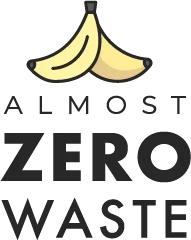15 Easy Ways To Be Sustainable In Everyday Life

This post and the photos within it may contain affiliate links. If you purchase something through the link, I may receive a commission at no extra charge to you.
Everything you do in your day-to-day life has an impact on the planet. Some actions are better and more sustainable for the planet, while others – not so much.
Finding simple ways to be sustainable in everyday life could lower your environmental impact, and it can be a great way to become more eco-friendly.
In this post, you will learn about:
- 15 ways to be more sustainable in everyday life
- Sustainable living vs. zero waste
- The 3 most powerful actions
- Summary
Let’s begin!
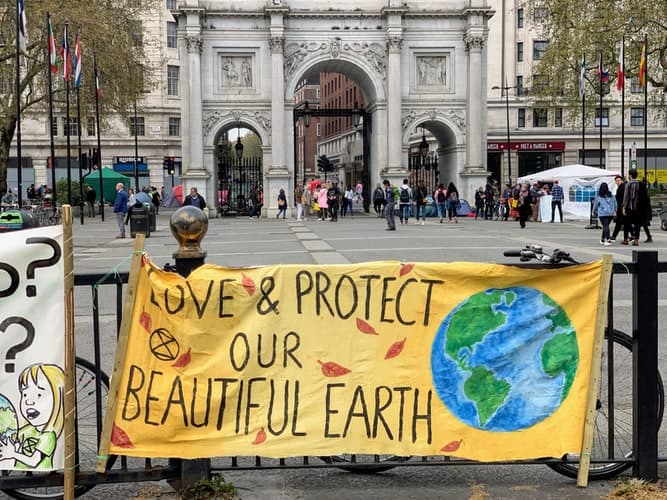
15 Easy Ways To Be Sustainable In Everyday Life:
1. Eat more plants
The most sustainable diets are the vegan and vegetarian ones, while the least sustainable one is the omnivore diet.
Livestock takes up most of the world’s agricultural land (77%) and only produces 18% of the world’s calories. Our World Data says it perfectly:
Less meat is nearly always better for your carbon footprint than sustainable meat.
Hannah Ritchie
While you don’t have to go vegan overnight, eating animals is terrible for the environment. So you can challenge yourself and incorporate more plant-based foods into your diet.
You can start adding more of the most eco-friendly foods with the lowest environmental impact, which includes whole-grain cereals, fruits, vegetables, legumes, olive oil, etc.
You can consider consuming more plant-based protein sources like tofu, beans, peas, and nuts, as they also have the lowest carbon footprint. And if you are open and curious about a 100% plant-based diet, you can try to go vegan slowly with my guide.
For recipe inspiration, you can go over YouTube, and find amazing & simple plant-based recipes. Some of my favorite channels are Gaz Oakley, Rainbow Plant Life & Pick Up Limes.
Other ways to become more sustainable with food are:
- Eat local – Whenever possible, buy from local farmers’ markets and shops.
- Avoid food waste – To save money, resources, energy, and water.
- Meal prep – To save money & reduce plastic wraps from to-go foods or snacks.
- Choose organic – It requires 30-50% less energy during production and has less exposure to harmful chemicals.
- Compost – To reduce your GHG emissions. Find 7 composting methods here.
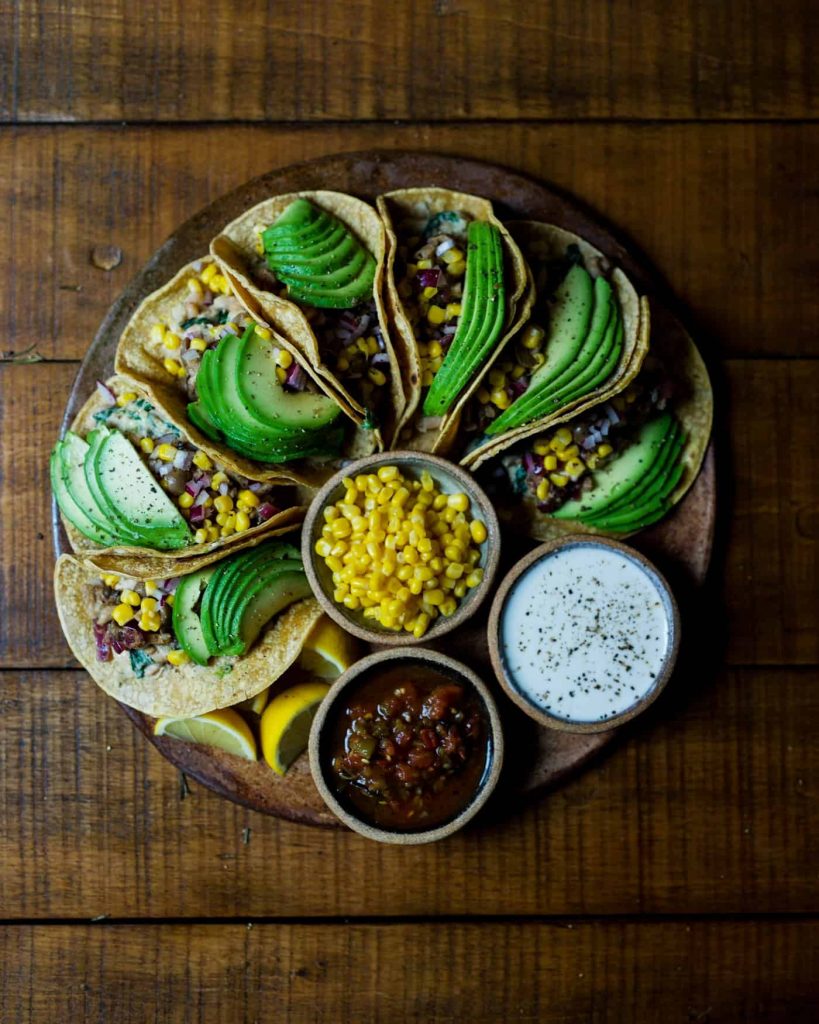
2. Save energy
By using less energy, you can save money and reduce carbon emissions. There are various small actions you can do that will pile up in the long run.
Some easy ideas include – ensuring windows are closed when the heating/air conditioner is on, turning off the light when you are not in the room, air drying clothes, and washing them with cooler water.
Also, did you know that always-on, inactive devices can add 1,300 kilowatt-hours, or $165 annually, to your household’s electricity bill? To avoid that, unplug things you don’t actively use. That can be a plugged-in phone charger, printer, radio, alarm clock, microwave, etc.
Some additional tips that can help you save energy include:
- Switch to LED Lighting – Ensure the heat is not trapped around the bulb so it doesn’t get too hot and burn out faster.
- Invest in energy-efficient equipment wherever possible – because older devices often use more energy than new ones.
- Green energy – Sign up with alternative energy providers, like solar or wind. Check what options you have.

3. Save water
Saving water is another effective way to reduce electricity use, greenhouse gas emissions, and other energy-intensive operations. So, a couple of actionable, easy tips that you can implement right away are:
- Run the dishwasher with only a full load – Can save more than 3,400 gallons of water each year. Wait for full loads of your clothes, too.
- Reuse water – Try washing vegetables in a bowl and reuse the water for your plants or garden.
- Take shorter showers – Add a 4-minute shower timer to remind you when to get out. I like to play a song on my phone and use it as a “timer.”
- Take cold showers – Cold water uses less energy, plus you are likely to stay in the shower for less time. So, if you are brave enough, start taking cold showers. They are pretty good for you anyway. (have you ever heard of Wim Hof?)
- Stop the water – When you wash dishes or brush your teeth.
- Eat less cheese – Did you know that cheese is a food that uses the most freshwater in its production? 5,605 liters of fresh water are used to produce a kilogram of cheese.
4. Recycle
Even though recycling isn’t as effective as we all wished, separating your trash and placing waste in the correct bins is still a good practice.
Since every place has its own specific rules, it is important to see what are the requirements in your local area.
Additionally, you can also try to reuse items as much as you can before throwing it away. You can find some cool inspiring ideas on reusing plastic items in my article.

5. Get sustainable reusables
Single-use plastics account for around 40% of the total production of plastic (1, 2). Using so many single-use plastics is completely unnecessary when there are plenty of sustainable alternatives.
First, you can reduce your trash by being more conscious of your consumption and waste patterns. Second, you can get a couple of reusable items that will help you to avoid single-use plastics. For example, you may consider getting:
- Reusable water bottle
- Reusable coffee mug
- Reusable utensils
- Reusable lunch box
- Foldable tote bag/backpack
- Reusable menstrual products (menstrual cup, reusable pads, or menstrual underwear)
- Reusable safety razor
These are just a couple of ideas. You can see over 140 sustainable alternatives for wasteful products in my article.
6. Drive less
Did you know that transportation accounts for 29% of greenhouse gas emissions (in the US)?
Bicycles can play a massive role in cities to reduce greenhouse gas emissions. So, consider walking & biking more often. It is better for the environment and your health anyway.
If the destination is too far, use public transportation or carpooling. For example, I mostly went to university on my bike while studying in Denmark. I used public transport only when it was extremely cold or rainy.
Read more on sustainable transportation for both short and long-distance.

7. Travel carbon efficiently
There are a couple of simple ways to travel more carbon efficiently. For example, you can replace a business trip with an online conference, if your job allows it.
You can stop domestic air travel, and choose other modes of transportation, which are more eco-friendly (like train, bus, carpooling, or hitchhiking).
The goal will be to reduce, and ultimately eliminate air travel. However, not everyone can stop flying forever and ever. In those cases, you can consider:
1) Direct flights – It’s best to fly direct rather than with a connection because about 25 percent of airplane emissions come from landing and taking off.
2) Travel lightly – Heavy luggage = greater fuel consumption to fly larger loads. So when you travel lightly, you will have a lower impact.
3) Avoid waste – Avoid getting things on the plane since everything is single-use or contains some amount of plastic. Bring reusables & meal prep for longer flights.
4) Offsets – A carbon offset does not reduce emissions, but it is a way to “compensate” for the GHGs. It works by paying an organization that uses the funds for a climate-friendly activity such as planting trees.
Related post: 8 Most Eco-Friendly Ways Of Transportation For Short & Long Distance

8. Boycott fast fashion
Fast fashion is the rapid production of inexpensive clothing in response to the latest & quickly changing trends. The clothing industry is extremely harmful to our planet because:
Textile production releases large amounts of GHG emissions and hazardous chemicals into the environment.
- It significantly contributes to plastic entering the ocean (around half a million tonnes annually). That happens during the washing of plastic-based textiles.
- Most inexpensive clothing is made with synthetic textile fibers such as polyester, nylon, or acrylic. They require fossil fuels and are NOT biodegradable.
The few easy ways to be more sustainable here are to avoid impulsive shopping, support ethical & sustainable brands, and avoid buying clothing made from synthetic fibers.
Related post: 33 Fast Fashion Brands To Avoid
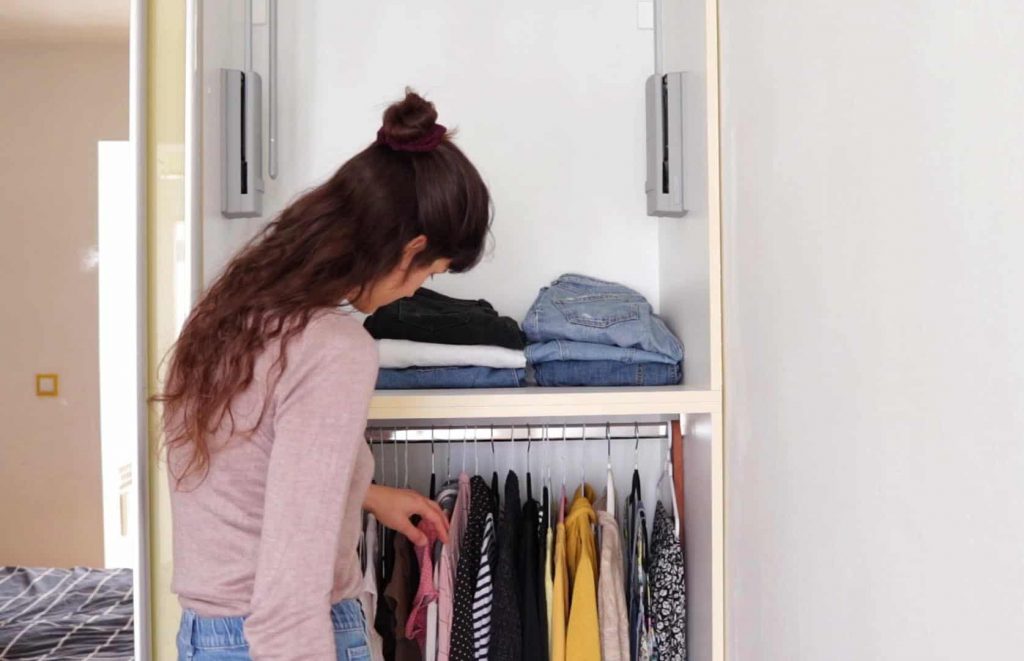
9. Buy second-hand
Another great way to shop sustainably is to choose second-hand items. Shopping for vintage clothes or second-hand electronics can significantly reduce your impact on the environment and give the items a second life.
Second-hand doesn’t demand new items, and it is not contributing to the waste stream. For example, recently I bought a super cute dress in great condition, for less than 1 euro!
I needed a hairdryer, so I found one from a local second-hand marketplace. A couple of months ago, I also bought a second-hand soy milk maker in perfect condition.
While I don’t always buy second-hand things (because it is hard to always stumble upon something good), I always try to find whatever I’m looking for in second-hand shops (online or local). This will always be the more sustainable option and can save you some cash.
Related post: 39 Best Online Thrift Shops
10. Support local brands
Supporting local coffee roasters, food vendors, beer brewers, and other small businesses is not only good for the local economy, but it’s also good for the planet.
Less transit time means less CO2 emissions. You will get bonus points if you purchase products that are fair trade certified.
“Fair Trade Certified” label on products encourages environmentally friendly production methods and ethical working conditions for workers.
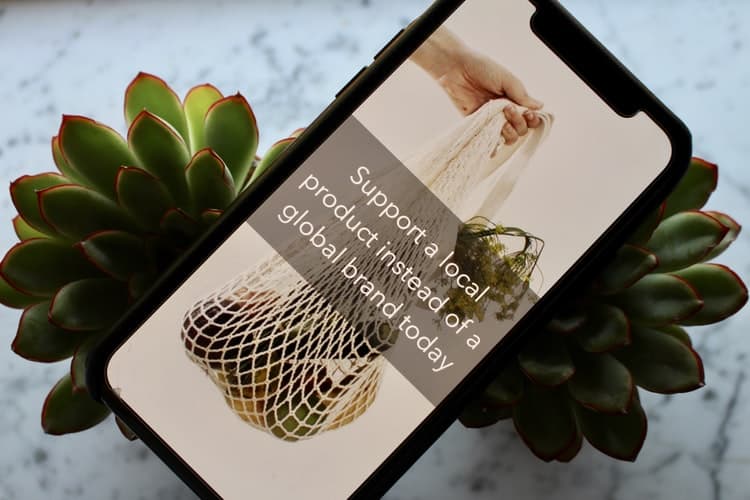
11. Buy less
Merely buying less stuff is an excellent path to lower emissions.
Let’s say you need something for a special occasion. Instead of buying something you know you won’t use a lot, try to borrow it from someone.
For example, I usually go skiing once yearly, so I always rent ski equipment and borrow ski pants from a friend. And I use my normal jacket, which isn’t a ski jacket, but it works well enough.
My point is – whenever you need something, choose used or recycled items, and encourage sharing! It can be anything from clothing, electronics, books, food, etc.
Reusing, repurposing, swapping, and sharing things is a great way to build community and reduce waste.
Related posts: How To Organize a Clothing Swap & How To Become A Minimalist In 30 Days
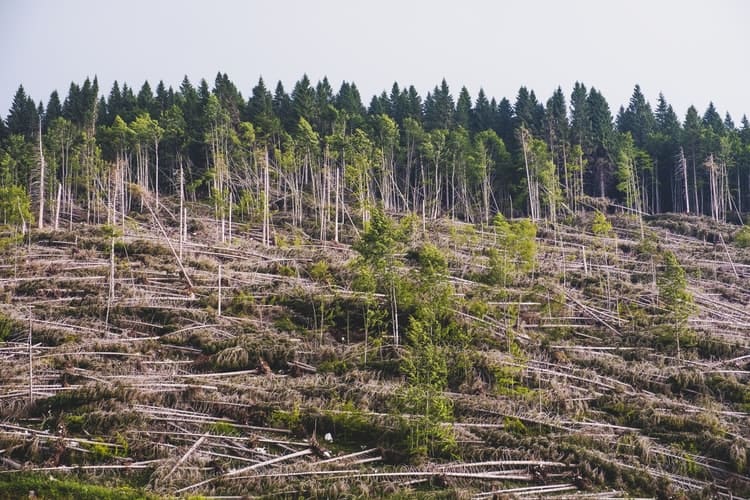
12. Go (almost) paperless
You can reduce deforestation by cutting back on your paper use. A few easy ways to do that include:
- Ditch paper towels – Switch to reusable rags.
- Buy recycled paper products – This will reduce the demand for virgin paper.
- Receive letters or bills over email – Nowadays, you can get most of your bills over your email, so make the switch.
- Purchase recycled or bamboo toilet paper – Many great companies offer eco-friendly toilet paper. You can find 18 sustainable & plastic-free toilet paper options here. My favorite ones are: Who Gives A Crap (Worldwide) and A Good Company (Europe & Worldwide) – both are affordable, sustainable and will last super long.
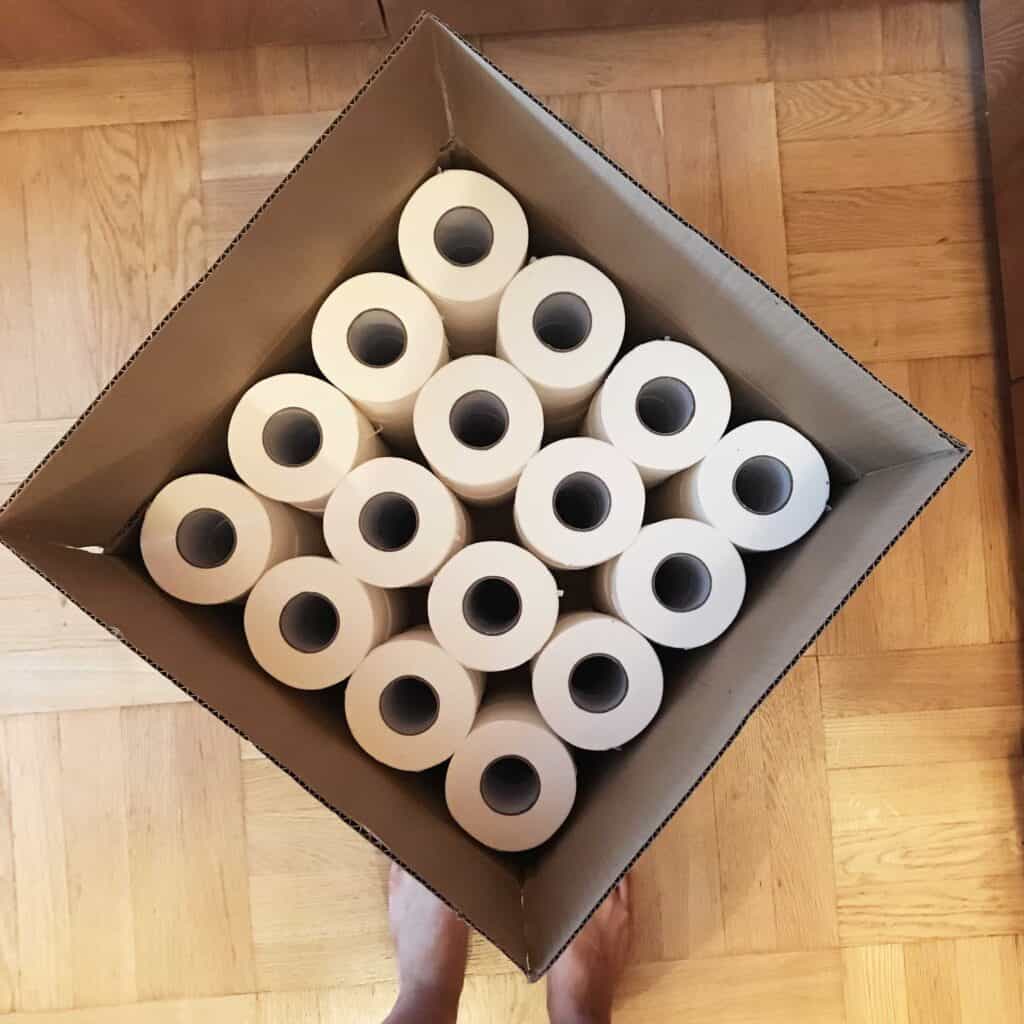
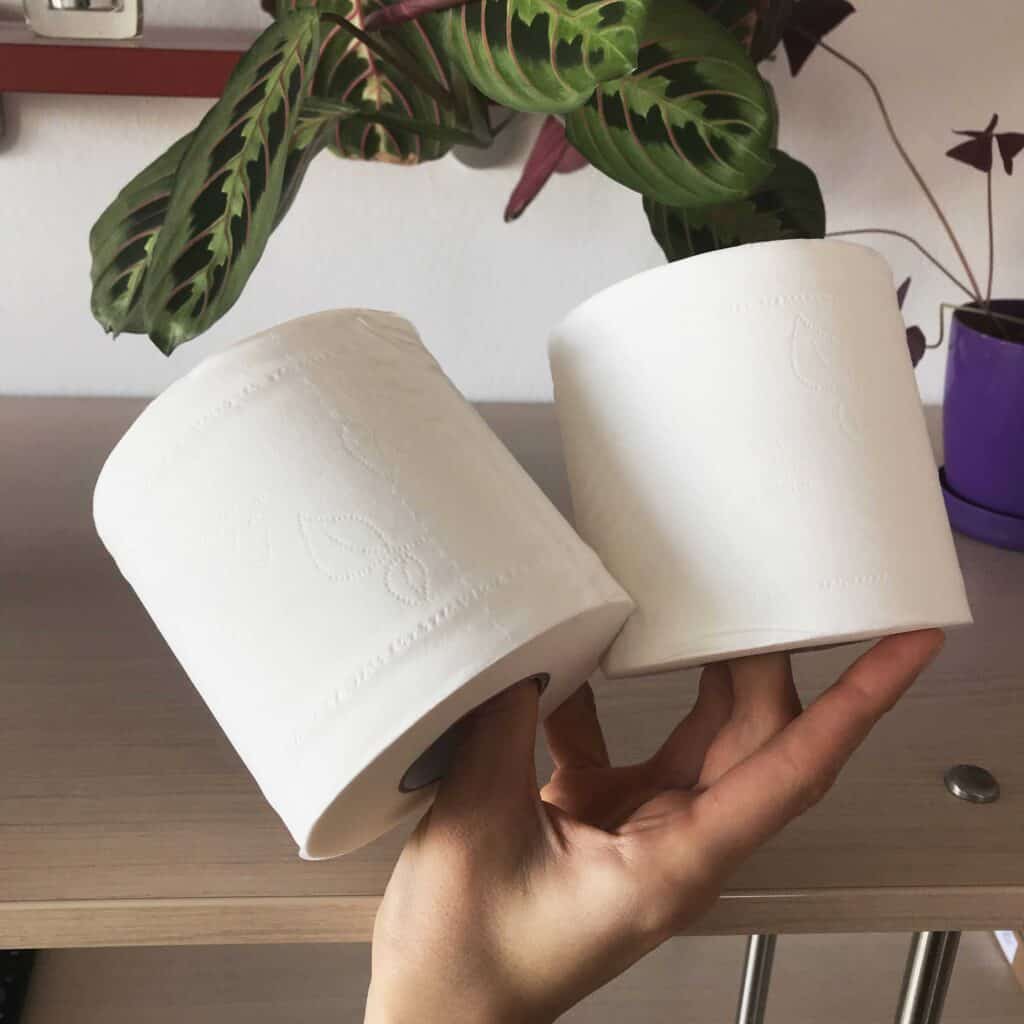
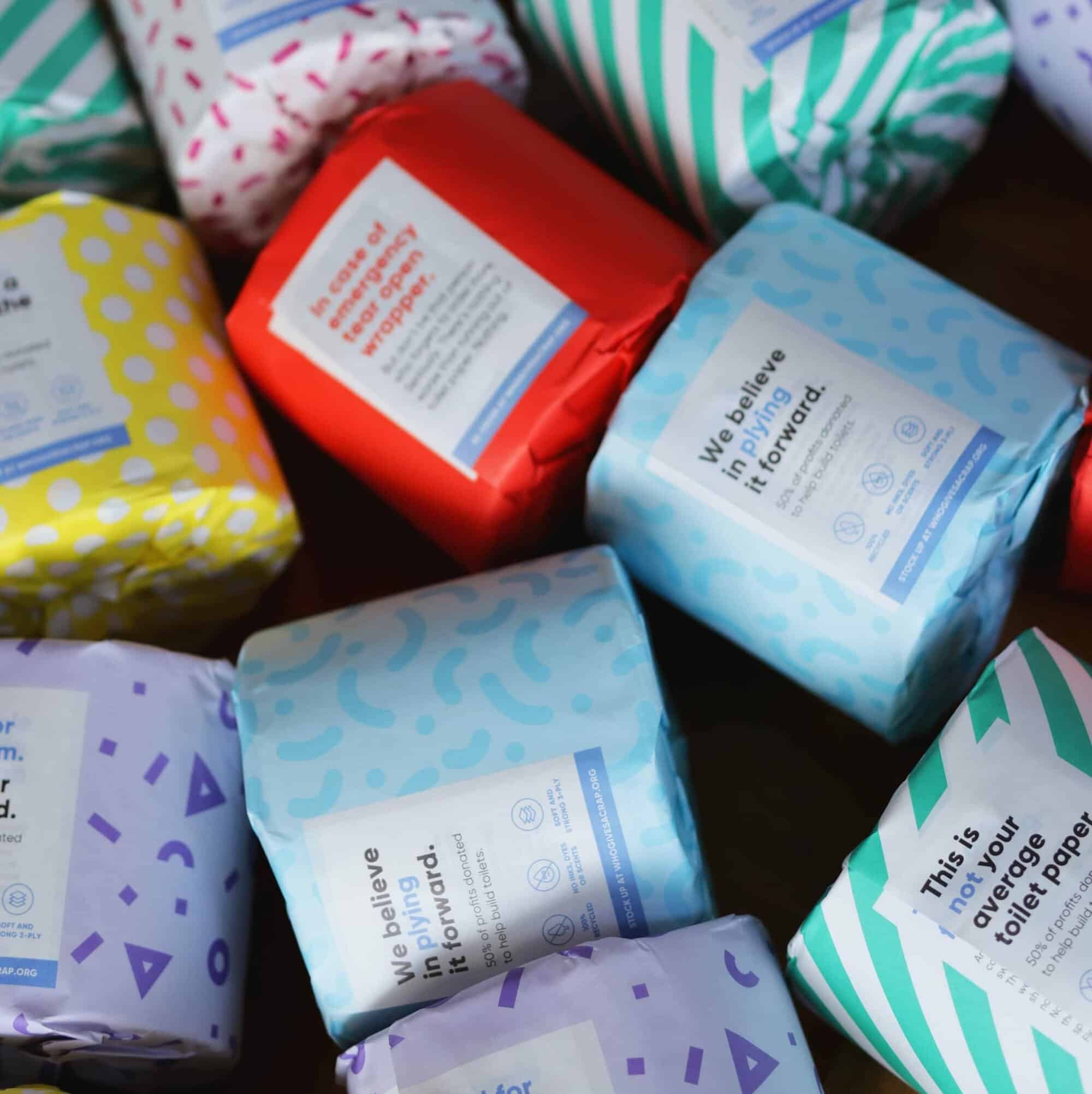
Related post: Who Gives A Crap Toilet Paper: Review
13. Eco-friendly cleaning
Many cleaning products contain chemicals that aren’t the best for the environment (or for you, for that matter). Luckily, there are plenty of sustainable options.
By choosing eco-friendly cleaning products, you will reduce the amount of plastic packaging used and the number of chemicals inserted into the water system.
A couple of great eco-friendly cleaning products are:
- Non-toxic (& zero waste) laundry powder
- Loofah scrubbers and plastic-free dish brush
- Castile dish soap
- Natural all-purpose cleaner
- Meliora cleaning products
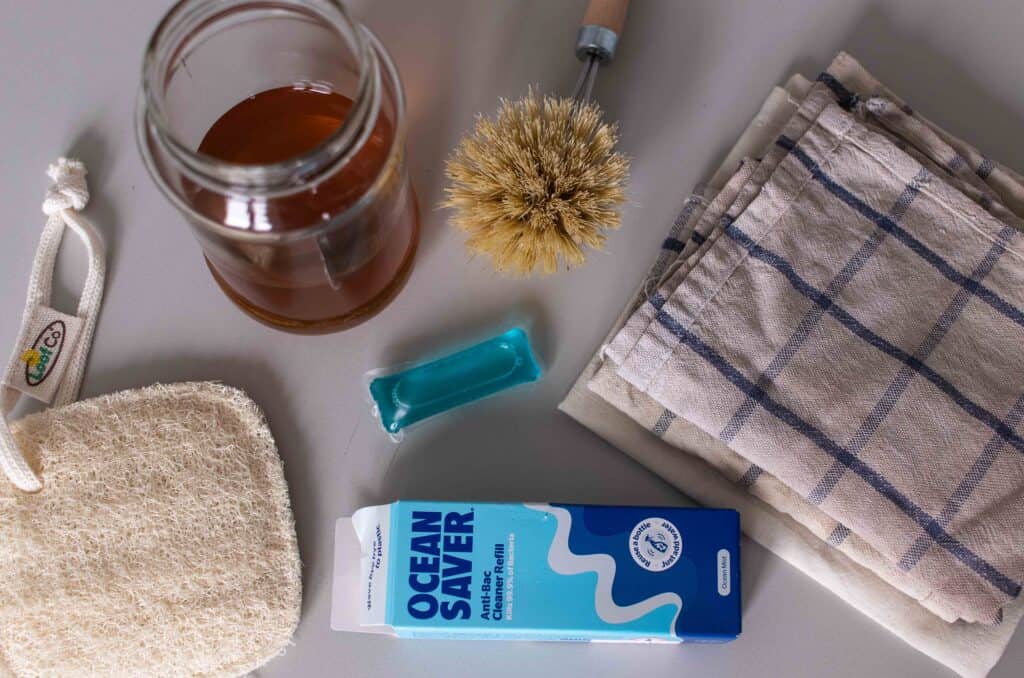
14. Avoid plastic
Whenever you go out shopping, try to buy package-free products. You can purchase foods and other things in bulk in reusable containers.
Since this isn’t always an option, the next thing you can do is – look for a plastic-free option. Some ideas include:
- Always bring a bag (or backpack) to the shop.
- Ditch single-use thin bags for produce and switch to reusable ones.
- Get a reusable water bottle and avoid getting drinks in plastic bottles.
- Pick foods in glass, aluminum, or (recycled) paper. Reuse, upcycle, and recycle the containers.
- Get a bamboo toothbrush and plastic-free toothpaste or tooth tablets for brushing your teeth.
- Plastic-free personal essentials, like skincare, deodorant, etc.
- When I order food, I always write a note to ask for plastic-free packaging (and no utensils). Usually, it works, and they bring everything on paper. If I’m not too lazy, I will go to the place with my own containers and ask if they can put the food inside.
15. Go (almost) zero waste
The production of anything usually requires energy related to greenhouse gases. Moreover, some materials, such as plastic, emit greenhouse gases at every production stage.
Adopting zero waste practices can help you to reduce your impact. The best way to become (almost) zero waste is through:
- Rethinking what we need and the way we buy
- Refusing things we don’t need
- Reducing the things we use and focusing on long-lasting products
- Reusing what we have
- Repairing what we can
- Recreating things whenever possible (DIYs)
- Composting our food waste
- Recycling as little as possible
Related post: 15 Zero Waste Tips That Don’t Cost Any Money
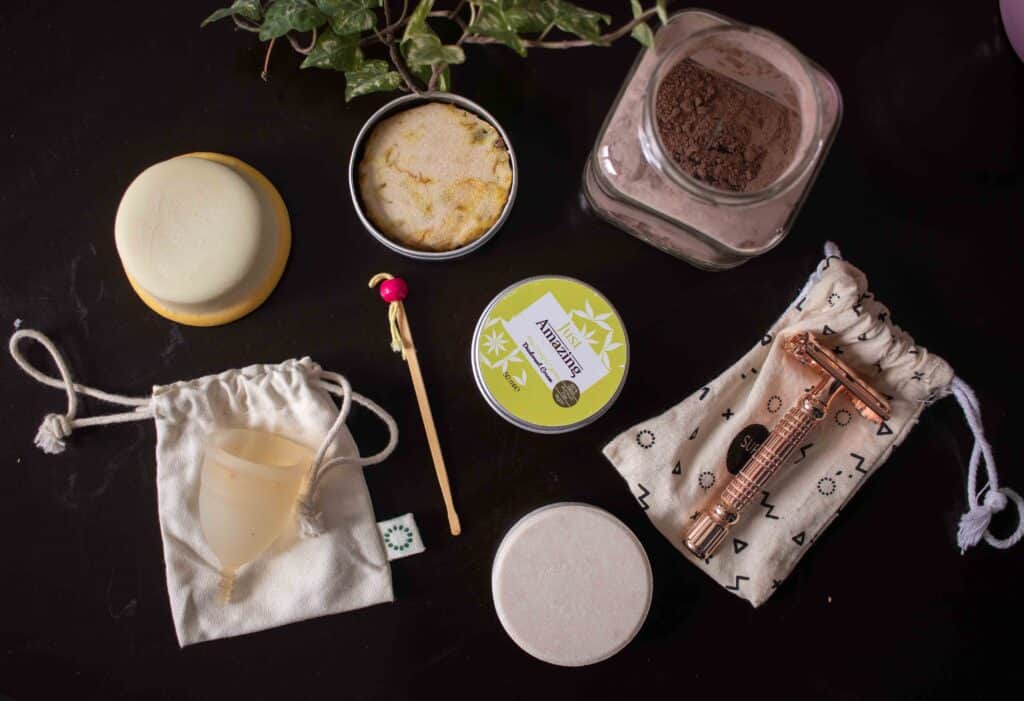
Sustainable living vs. zero waste
First off, what is sustainable living?
Sustainable living is attempting to reduce your individual use of the Earth’s natural resources and reduce the environmental damage as much as possible.
A sustainable lifestyle takes into account:
- eating
- transportation
- energy use
- waste disposal
- socialization, and more.
Various actions and lifestyle changes promote a sustainable way of living. Encouraging and sharing the best practices will ensure the greatest environmental, economic, and social impact.
And the good thing is that you don’t have to go crazy about it. You can reduce your carbon footprint and leave a positive impact by simply changing some of your habits.
Sustainable living vs. zero waste:
Sustainable living and zero waste living are very similar lifestyles. While they are driven to the same goal. While many overlap, sometimes, each lifestyle prioritizes different actions.
- Zero waste focuses on reducing trash, aiming to send nothing to a landfill. It is about redefining the system by how we buy, consume, and dispose of things.
- Sustainable living is a much broader concept that reduces the environmental impact of large-scale day-to-day activities. It doesn’t necessarily focus on the physical forms of waste.
For example, zero waste living strives to reduce food packaging, whereas sustainable living aims to reduce the food system’s impact.
People interested in sustainable living might get something packaged in plastic if it is organic and locally made.
A person interested in zero waste living might get a package-free product that isn’t organic or locally made. Ultimately, getting the best of both worlds will be the best.
The 3 Most Powerful Actions
Do you wonder which are the actions with the most significant positive impact? If you want to choose just 3 actions, the most effective in reducing your greenhouse gas emissions are:
- living car-free
- avoiding airplane travel
- eating a plant-based diet
Summary
There you have it – 15 actionable ways to be sustainable in everyday life. If you want to make a difference, then you must get involved and take the initiative.
You don’t have to do everything at once. Even a couple of these changes can have a positive impact in the long run.
Living sustainably may seem like a hustle, but try to answer this question: “Why do I want to live a sustainable lifestyle?”
Whatever the answer might be, don’t forget it. Your “whys” will help you make better decisions, take action, and focus on moving toward your goal and the sustainable life you want to live.
Pin me!

